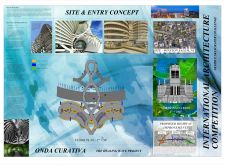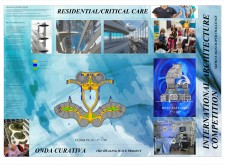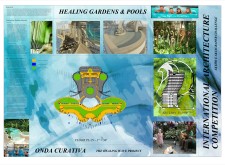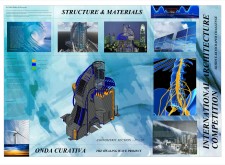5 key facts about this project
The primary function of the project is multifaceted, catering to various needs within the community. It houses spaces for residential living, commercial activities, and communal areas, thus creating an environment that promotes social engagement and connectivity. The design facilitates a seamless flow between different areas, allowing occupants to transition effortlessly from private living spaces to shared community functions. This deliberate spatial arrangement encourages interaction, reflecting a contemporary approach to urban living where collaboration and connection are prioritized.
A key aspect of the design is its materiality, which plays a vital role in shaping the overall aesthetic and functional quality of the project. The architects have adopted a palette that combines durability with warmth, incorporating materials such as concrete, glass, wood, steel, and brick. Concrete serves as the primary structural element, providing robustness and allowing for expressive, modern forms. Glass elements are strategically used to maximize natural light, creating bright and inviting interiors. Wood introduces a sensory warmth to the spaces, enhancing comfort and human scale. Meanwhile, steel offers structural integrity and a modern touch that complements the overall design language. Brick, used in select areas, establishes a dialogue with the historical context of the neighborhood, grounding the project within its locale.
The unique design approaches evident in this project underscore a commitment to sustainability and innovation. Notably, green technologies have been seamlessly integrated into the design, such as rainwater harvesting systems and solar panels. These features not only reduce the environmental impact of the project but also educate residents about sustainable practices. Additionally, the incorporation of green roofs and living walls adds ecological value while providing lush aesthetics and improving biodiversity in an urban environment.
The architectural design also takes into account the climatic conditions of the region, orienting the building to optimize daylight exposure while minimizing heat gain. This careful consideration of the local climate enhances energy efficiency and ensures year-round comfort for the occupants. Furthermore, the design emphasizes outdoor connectivity, with terraces, balconies, and shared gardens that encourage residents to engage with nature and the community around them.
Throughout the project, thoughtful attention to detail is evident in various elements, from the selection of fixtures to the arrangement of landscaping. The use of modular furniture in communal areas allows for flexibility and adaptation to different activities, reinforcing the idea that architecture should serve the dynamic needs of its users. Spaces are designed to be multi-functional, ensuring that each area can accommodate a variety of purposes, whether it be social gatherings, recreational activities, or quiet retreats.
The project not only fulfills a functional brief but also embodies architectural ideas that promote sustainability, community, and well-being. It stands as a testament to the potential of design to create positive change within urban settings. The innovative integration of materials, technological advancements, and careful planning showcases a balanced approach that is both practical and visionary.
For readers interested in gaining a deeper understanding of this project, exploring the architectural plans, sections, and overall designs will provide valuable insights into the design philosophy and execution. Delving into these elements can reveal the thought processes involved and the ways in which the project meets its intended goals. We encourage you to discover the architectural ideas that underpin this project by reviewing its presentation to appreciate the depth and nuance of its design and function.


























